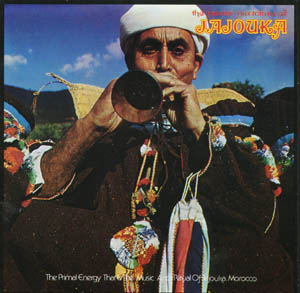You are using an out of date browser. It may not display this or other websites correctly.
You should upgrade or use an alternative browser.
You should upgrade or use an alternative browser.
I'm a touch bored
- Thread starter STN
- Start date
fokse vektaire xeven
Arab Nazi
The first two Vuh albums which are pretty much just synthesizer and drums are fucking amazing. even if you don't like the later stuff you can't argue with those...
No one is hating on flutes. But panpipes? Come on...
wikipedia said:The Master Musicians of Jajouka's traditions have been passed down in a supposedly unbroken line of the Attar family of Jajouka, going back 4000 years. Before the Alaouite dynasty, the master musicians used to play in medieval times for sultans in their courts, travelling with them and announcing their arrival to villages and cities.
Their first exposure to outsiders seems to have come through their introduction to the Beat generation. Painter Mohamed Hamri led artist Brion Gysin to the village to meet the group. Gysin became fascinated with the group's music and led writer William Burroughs to the village. Burroughs described it as the world's oldest music and the musicians as a "4000-year-old rock and roll band". In Tangier, Gysin founded the 1001 Nights restaurant, in which the musicians played throughout the 1950s to a largely Western audience in what was then an international zone.
When Rolling Stones lead guitarist Brian Jones visited Morocco in 1968, Gysin and Hamri took him to the village to record the master musicians in the ground-breaking release Brian Jones Presents The Pipes Of Pan At Jajouka, whose original release cover had spelled the last word as "Joujouka" and had featured cover artwork by Hamri before a 1990s redesign. Hamri had assisted the group during the period of the first album. In an article in Rolling Stone published in October of 1971 to publicize the new release, journalist Robert Palmer mentioned Hamri's role translating some of the old chief's comments to Palmer during his visit to the village.


noel emits
a wonderful wooden reason
Ah Jajouka, for real. Not sure what those guys call their instruments though.
Usually when 'pan pipes' are mentioned it's the vapid deployment of the sound of those wooden andean flutes that springs to mind:
Usually when 'pan pipes' are mentioned it's the vapid deployment of the sound of those wooden andean flutes that springs to mind:
